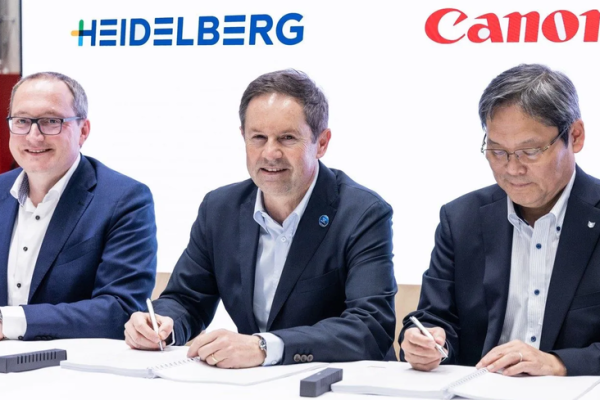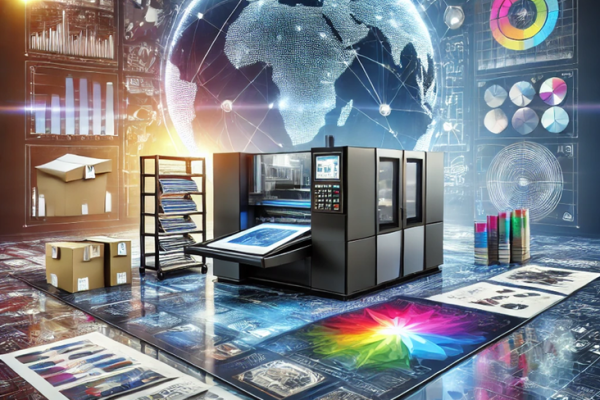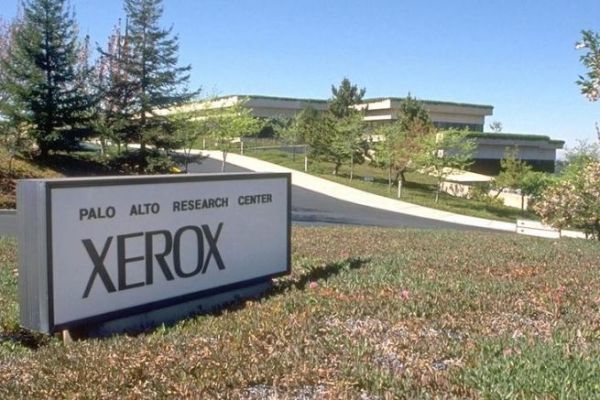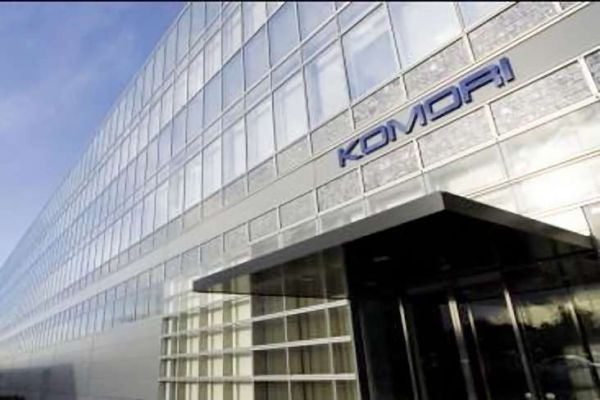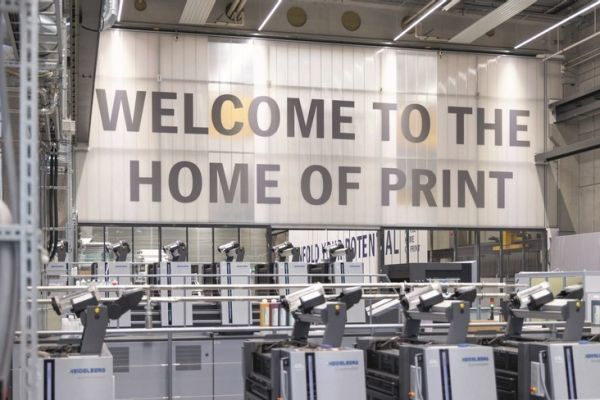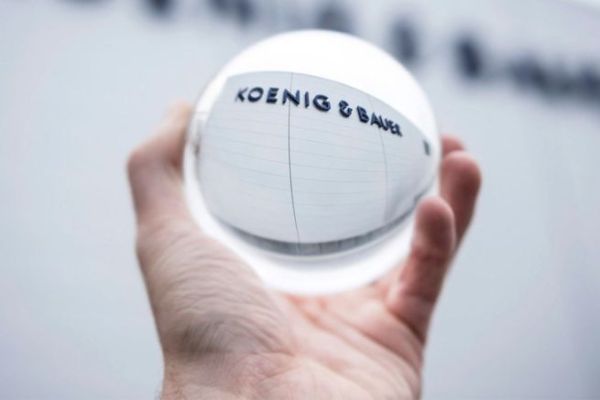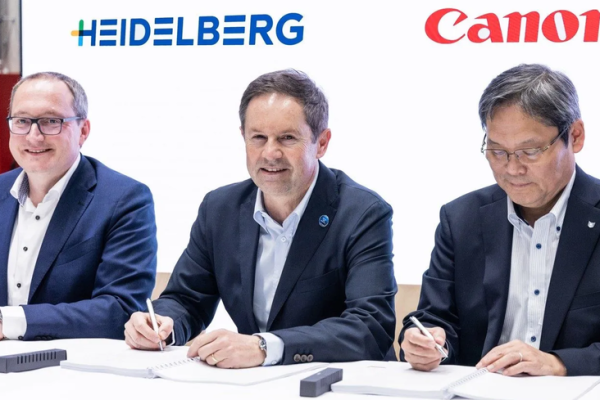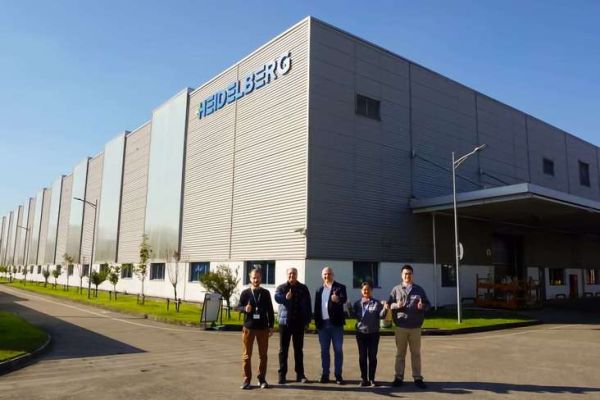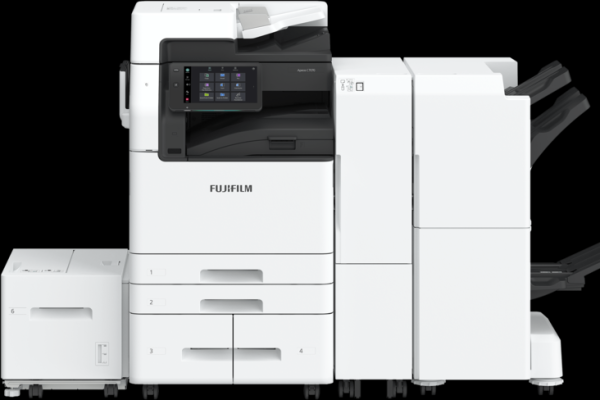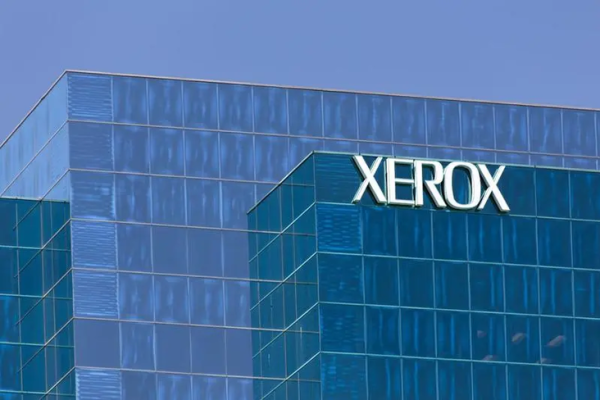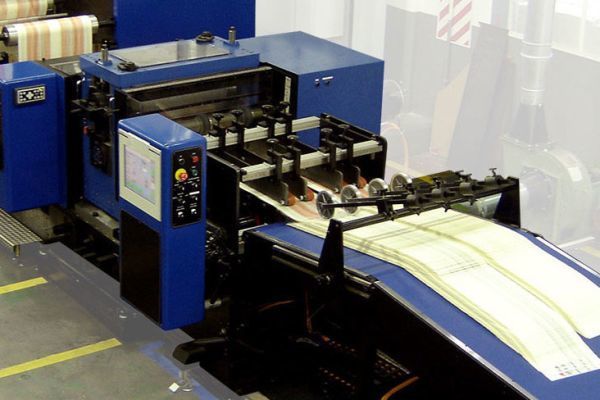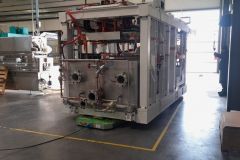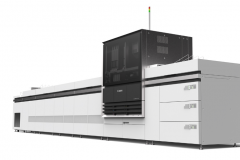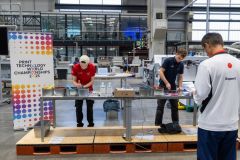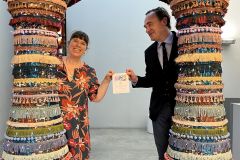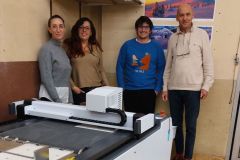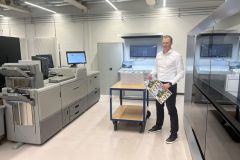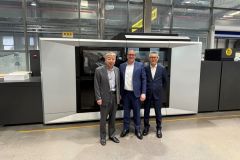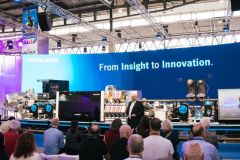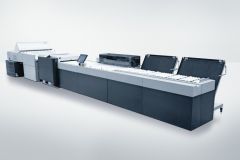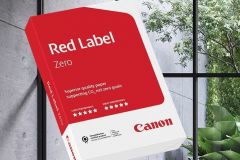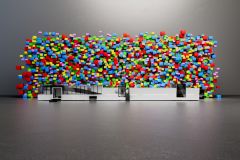At drupa 2024, Heidelberger Druckmaschinen AG (Heidelberg) and Canon announced a worldwide collaboration in sheetfed inkjet printing. The official signing of this agreement has just brought together members of the senior management of both companies at the Wiesloch-Walldorf site in Heidelberg, Germany. The partnership aims to support commercial printers in their transition to hybrid production models, combining offset and digital printing. Both companies intend to respond to market trends, marked by growing demand for shorter runs and a wider variety of jobs.
Heidelberg CEO Jürgen Otto described the partnership as a milestone in the company's growth strategy. "Working with Canon enables us to strengthen our market position and support our customers with innovative production solutions." he declared.
At the heart of this cooperation is the Jetfire 50 system, a B3 inkjet press connected to Heidelberg's Prinect ecosystem. This press, designed for seamless integration into hybrid offset/digital environments, meets the needs of printers looking to diversify their offering while optimizing their processes.
A B2 version, the Jetfire 75, is also under development, strengthening Heidelberg's portfolio for hybrid-oriented printers. The first installations of the Jetfire 50 are scheduled for spring 2025 in Germany, Austria and Switzerland.
Since September 2024, Heidelberg has been offering demonstrations of the Jetfire 50 at its Wiesloch-Walldorf site, as well as in its showroom in Japan. These initiatives enable potential customers to assess the press's performance in real-life configurations. According to Heidelberg, user interest in the Jetfire ecosystem remains high, with growing demands for AI-controlled production environments incorporating offset technologies. In 2025, Heidelberg plans to extend the availability of the Jetfire 50 to all its regions.
The partnership with Canon reflects a major strategic evolution for Heidelberg, where the complementarity between offset and digital is becoming a key focus. This hybrid model enables printers to respond rapidly to fluctuating customer requirements, while capitalizing on the respective strengths of both technologies.
